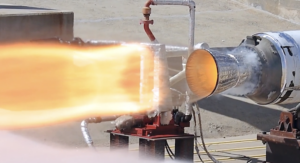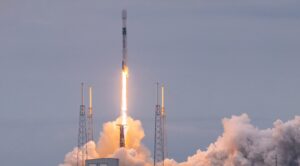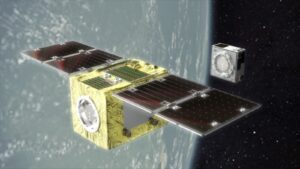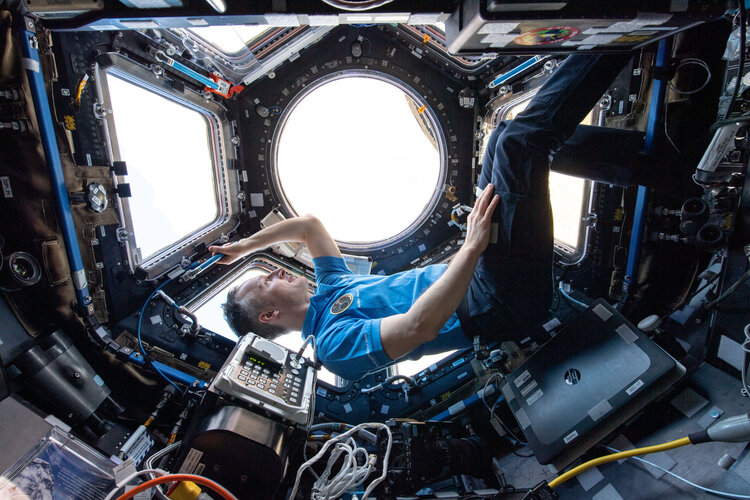BRICS to use big data to achieve sustainable development goals
Thursday, 05 May 2022 08:00 The Chinese Academy of Sciences will enhance dialogue and collaboration with peers from BRICS countries - Brazil, Russia, India, China and South Africa - to use big data as a tool to achieve sustainable development, scientists said during the BRICS Forum on Big Data for Sustainable Development, which began on Tuesday.
Entrusted by CAS President Hou Jianguo, Zhang Yaping, vice-president of
The Chinese Academy of Sciences will enhance dialogue and collaboration with peers from BRICS countries - Brazil, Russia, India, China and South Africa - to use big data as a tool to achieve sustainable development, scientists said during the BRICS Forum on Big Data for Sustainable Development, which began on Tuesday.
Entrusted by CAS President Hou Jianguo, Zhang Yaping, vice-president of New study reveals the effect of extended space flight on astronauts' brains
Thursday, 05 May 2022 08:00
Long-duration space flight alters fluid-filled spaces along veins and arteries in the brain, according to new research from Oregon Health & Science University and scientists across the country.
The study published today in the journal Scientific Reports.
"These findings have important implications as we continue space exploration," said senior author Juan Piantino, M.D., assistant professor of pediatrics (neurology) in the OHSU School of Medicine. "It also forces you to think about some basic fundamental questions of science and how life evolved here on Earth."
The research involved imaging the brains of 15 astronauts before and after extended tours of duty on the International Space Station.
Researchers used magnetic resonance imaging to measure perivascular space—or the space around blood vessels—in the brains of astronauts prior to their launch and again immediately after their return. They also took MRI measurements again at one, three and six months after they had returned. Astronauts' images were compared with those taken of the same perivascular space in the brains of 16 Earth-bound control subjects.
Comparing before and after images, they found an increase in the perivascular spaces within the brains of first-time astronauts, but no difference among astronauts who previously served aboard the space station orbiting earth.
Air Force’s rocket propulsion arm looking to invest in technologies for ‘responsive launch’
Wednesday, 04 May 2022 22:45
The Air Force Research Laboratory’s rocket propulsion arm is asking space companies to help identify technologies and capabilities the military will need to launch missions on short timelines.
The post Air Force’s rocket propulsion arm looking to invest in technologies for ‘responsive launch’ appeared first on SpaceNews.
Satellogic to launch 68 satellites with SpaceX
Wednesday, 04 May 2022 22:25
Earth imaging company Satellogic announced May 4 it signed a contract with SpaceX to launch 68 more satellites as it continues to build out its constellation.
The post Satellogic to launch 68 satellites with SpaceX appeared first on SpaceNews.
DARPA moving forward with development of nuclear powered spacecraft
Wednesday, 04 May 2022 20:31
The Defense Advanced Research Projects Agency on May 4 issued a solicitation for proposals for the next phase of a demonstration of a nuclear powered spacecraft.
The post DARPA moving forward with development of nuclear powered spacecraft appeared first on SpaceNews.
The Laser Interferometer Space Antenna reaches a crucial milestone
Wednesday, 04 May 2022 19:00
LISA, the Laser Interferometer Space Antenna, has reached an important milestone: it has passed the comprehensive "Mission Formulation Review" (MFR) and now enters the next phase of development. The review team, consisting of experts from ESA, NASA, the scientific community and industry, identified no showstoppers and confirmed that LISA has successfully reached a maturity sufficient to proceed to the next stage of development.
The MFR confirms the feasibility of the LISA mission and identifies a clear path of technology developments needed to reach the next major milestone: the mission adoption. The MFR is a checkpoint to ensure that the technology and planning for LISA is sufficiently mature; this is a prerequisite for mission development to continue. In an ESA mission lifetime cycle, the MFR is the formal end of Phase A (mission feasibility). LISA now enters Phase B1, which is focused on the preliminary definition of the mission.
"LISA is well underway. We are now entering phase B1, during which we do more detailed design work to establish the complete set of mission requirements and the verifications approach," says Prof. Karsten Danzmann, lead of the LISA Consortium.
Astroscale debris-removal demo makes close approach despite thruster issues
Wednesday, 04 May 2022 17:19
Astroscale said May 4 it made another close-approach rendezvous between its two ELSA-d spacecraft last month but ongoing thruster problems continue to hold up a capture demonstration delayed from January.
The post Astroscale debris-removal demo makes close approach despite thruster issues appeared first on SpaceNews.
Watch live – Matthias Maurer returns to Earth
Wednesday, 04 May 2022 16:50
After almost six months aboard the International Space Station, ESA astronaut Matthias Maurer is coming home. Watch all the action, from undocking to splashdown, live on ESA Web TV.
Sun releases moderate solar flare
Wednesday, 04 May 2022 16:29
The Sun emitted a moderate solar flare on May 4, 2022, peaking at 5:00 a.m. ET. NASA's Solar Dynamics Observatory, which watches the Sun constantly, captured an image of the event.
Mission Minerva meets Cosmic Kiss | Two astronauts in orbit
Wednesday, 04 May 2022 11:30 Video:
00:04:42
Video:
00:04:42
For the first time since mid 2011, ESA has two astronauts living and working together aboard the International Space Station. Watch a conversation between Samantha Cristoforetti and Matthias Maurer in this rare moment for Europe in space.
The astronauts’ meeting marks a brief crossover between the start of Samantha’s second space mission, Minerva, and Matthias’s final days in orbit for his first mission, Cosmic Kiss.
Samantha arrived with Crew-4 on 28 April in SpaceX Crew Dragon Freedom, while Matthias will depart with Crew-3 in SpaceX Crew Dragon Endurance in May after almost six months on the Station.
In this video
Nelson criticizes “plague” of cost-plus NASA contracts
Wednesday, 04 May 2022 10:48
NASA Administrator Bill Nelson offered a surprisingly strong endorsement of fixed-price contracts and competition at a congressional hearing May 3, calling traditional cost-plus contracts a “plague” on the agency.
The post Nelson criticizes “plague” of cost-plus NASA contracts appeared first on SpaceNews.
LISA mission moves to final design phase
Wednesday, 04 May 2022 08:00
ESA’s Laser Interferometer Space Antenna (LISA) passed an important review that marks the mission as feasible for final technology development and design before adoption.
Stanford scientists describe a gravity telescope that could image exoplanets
Wednesday, 04 May 2022 07:49 In the time since the first exoplanet was discovered in 1992, astronomers have detected more than 5,000 planets orbiting other stars. But when astronomers detect a new exoplanet, we don't learn a lot about it: we know that it exists and a few features about it but the rest is a mystery.
To sidestep the physical limitations of telescopes, Stanford University astrophysicists have been workin
In the time since the first exoplanet was discovered in 1992, astronomers have detected more than 5,000 planets orbiting other stars. But when astronomers detect a new exoplanet, we don't learn a lot about it: we know that it exists and a few features about it but the rest is a mystery.
To sidestep the physical limitations of telescopes, Stanford University astrophysicists have been workin NASA's Mars Helicopter scouts ridgeline for Perseverance science team
Wednesday, 04 May 2022 07:49 NASA's Ingenuity Mars Helicopter recently surveyed an intriguing ridgeline near the ancient river delta in Jezero Crater. The images - captured on April 23, during the tiny helicopter's 27th flight - were taken at the request of the Perseverance Mars rover science team, which wanted a closer look at the sloping outcrop.
"Ingenuity not only provides imagery from an aerial perspective, but a
NASA's Ingenuity Mars Helicopter recently surveyed an intriguing ridgeline near the ancient river delta in Jezero Crater. The images - captured on April 23, during the tiny helicopter's 27th flight - were taken at the request of the Perseverance Mars rover science team, which wanted a closer look at the sloping outcrop.
"Ingenuity not only provides imagery from an aerial perspective, but a GomSpace to supply mission control system for KSAT Arctic satellites
Wednesday, 04 May 2022 07:49 GomSpace to deliver the Mission Control System that KSAT will use to operate the Arctic Weather Satellite
Today, GomSpace signed a contract to develop, deliver and support the Mission Control System that KSAT will use to operate the Arctic Weather Satellite mission.
The contract value is 10 MSEK and the majority of work will be done this year and next year.
The Arctic Weather S
GomSpace to deliver the Mission Control System that KSAT will use to operate the Arctic Weather Satellite
Today, GomSpace signed a contract to develop, deliver and support the Mission Control System that KSAT will use to operate the Arctic Weather Satellite mission.
The contract value is 10 MSEK and the majority of work will be done this year and next year.
The Arctic Weather S 